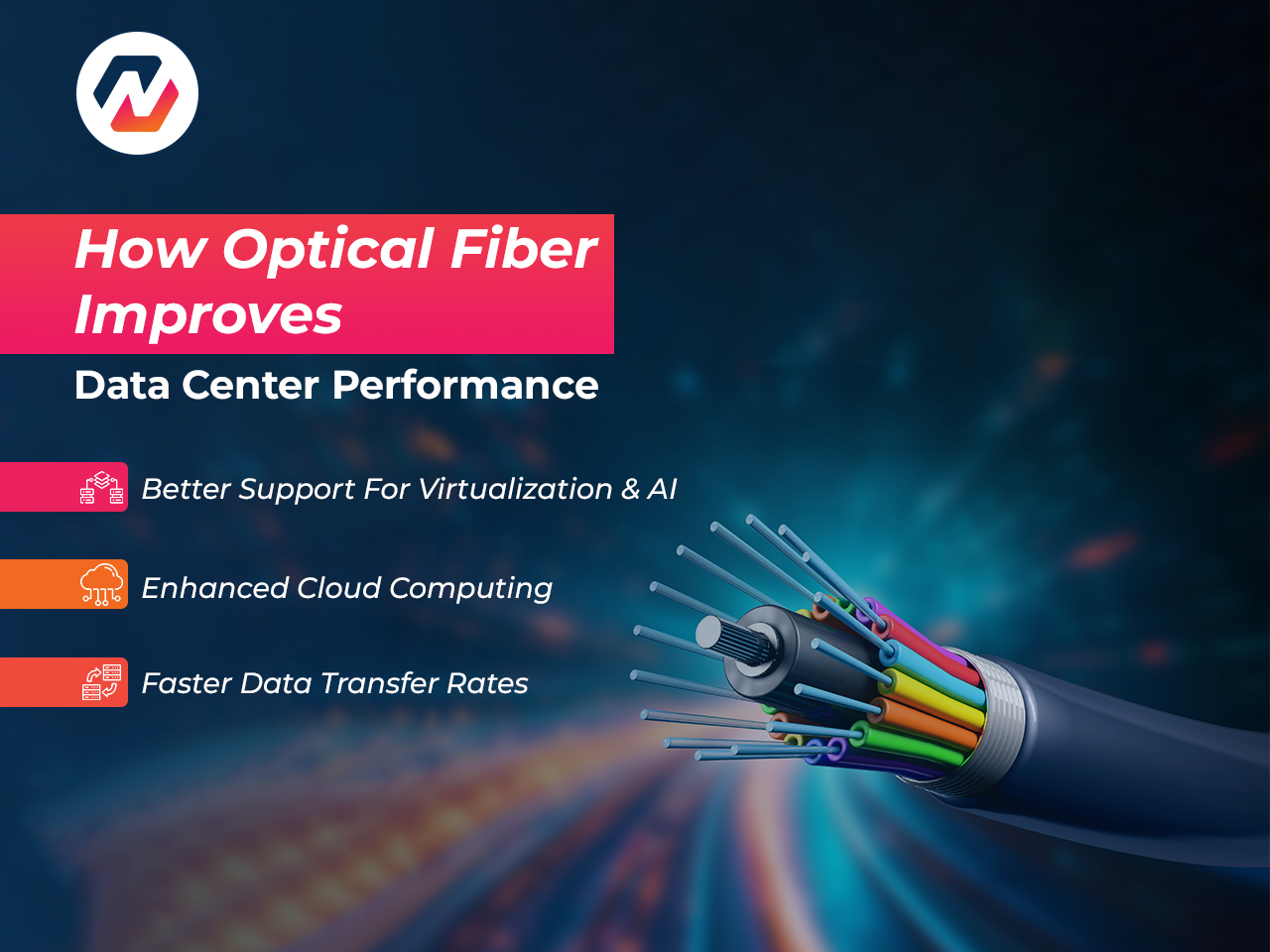Introduction
In today’s digital age, high-performance
data centers are crucial to ensuring that businesses, governments, and other organizations can access vast amounts of information quickly and reliably. As data volumes continue to rise, so does the need for faster and more efficient communication technologies. Enter optical fiber, a backbone technology that is rapidly transforming the landscape of modern data centers. But what exactly is optical fiber, and why is it so crucial in the evolution of data centers?Let’s dive into how optical fiber is shaping the future of data centers and driving the next wave of digital infrastructure.
The Role of Optical Fiber in Data Centers
Optical fiber plays an essential role in powering the communication systems within data centers. Here’s why:
High-Speed Communication
One of the key benefits of optical fiber is its capacity to transmit large volumes of data at extremely fast speeds. Unlike traditional copper cables, fiber-optic cables transmit data using light, resulting in faster and more efficient performance. This speed is crucial for data centers that need to process large volumes of data in real time.
Reduced Latency
Latency refers to the delay that occurs before data transfer starts after receiving the instruction to transfer. Optical fiber has a much lower latency compared to other transmission mediums like copper. This means that data centers can provide more responsive services, crucial for businesses relying on real-time data.
Scalability and Flexibility
As demand for data continues to grow, data centers need scalable solutions to accommodate higher traffic. Optical fiber provides exceptional scalability, enabling data centers to boost bandwidth and manage increased traffic without sacrificing performance. Fiber-optic systems are also more adaptable to future technological advancements.
Types of Optical Fiber Used in Data Centers
Not all optical fibers are the same. The two primary types used in data centers are:
Single-Mode Fiber (SMF)
Single-mode fiber is designed for long-distance communication. It allows data to travel through a single path, reducing signal loss and distortion. SMF is perfect for high-performance data centers requiring long-distance, high-speed data transmission.
Multi-Mode Fiber (MMF)
Multi-mode fiber, as the name implies, enables data to travel through several paths. MMF is typically used for shorter distances and is more cost-effective for certain data center applications. However, it doesn’t provide the same distance or performance as SMF.
How Optical Fiber Improves Data Center Performance
Optical fiber is a game-changer in terms of performance. Here’s how it enhances the functionality of data centers:
Faster Data Transfer Rates
With
optical fiber, data transfer rates are significantly faster, enabling faster access to information, real-time analytics, and improved overall system performance. This is especially important in industries like finance, healthcare, and technology, where speed is critical.
Enhanced Cloud Computing
Cloud services are heavily reliant on data centers, and optical fiber ensures that cloud providers can meet the demands for high-speed access and large data processing capabilities. Fiber-optic infrastructure facilitates seamless cloud storage, processing, and management.
Better Support for Virtualization and AI
As AI and virtualization technologies continue to grow, they require powerful networking solutions. Optical fiber supports these technologies by providing the bandwidth and speed necessary to handle the intensive data processing these applications demand.
The Role of Fiber Optic Switches in Data Centers
Fiber-optic switches are an essential component of modern data center infrastructure. These switches enable high-performance switching between different network components and help facilitate the flow of data across fiber-optic networks.
Fiber-optic switches support optical networks, enabling faster data routing, improved scalability, and reduced latency. By leveraging these switches, data centers can manage vast amounts of data traffic efficiently.
Optical Fiber is Shaping the Future of Data Centers
As technology continues to evolve, optical fiber is set to play an even more prominent role in the future of data centers. Advancements in fiber-optic technology will lead to even faster data transfer rates, reduced latency, and improved scalability.
With the growing demand for faster, more reliable data transmission, optical fiber will be at the heart of the next generation of high-performance data centers.
Conclusion
Optical fiber is undoubtedly the backbone of high-performance data centers. Its exceptional speed, reliability, and scalability make it the perfect choice for contemporary data infrastructure. As the demand for data continues to surge, fiber-optic technology will only become more critical in ensuring that data centers can meet these demands.
FAQs

